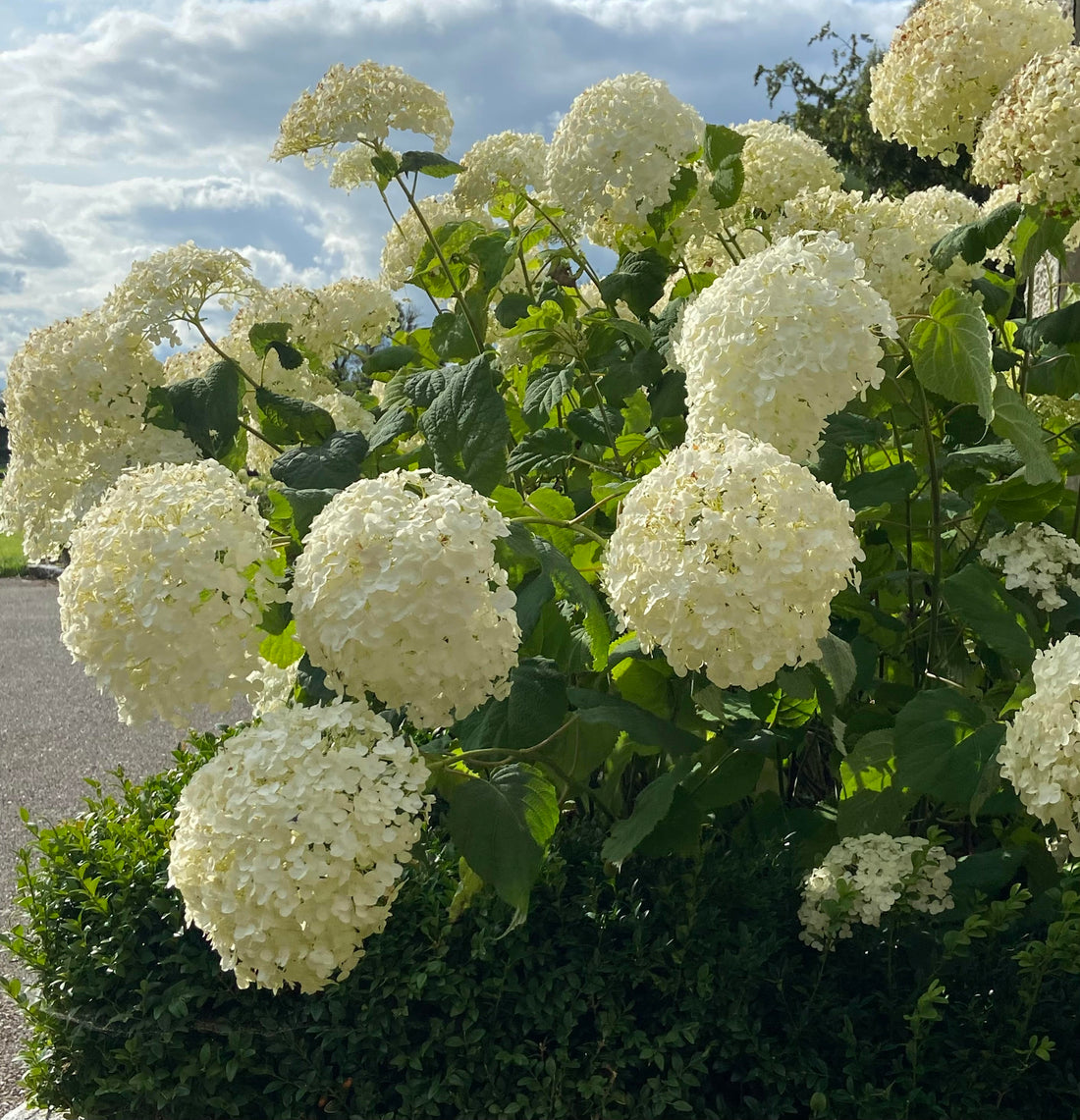
My Experience with Annabelle Hydrangeas: A Personal Guide to Care in Ireland
When I first planted my Annabelle hydrangeas five years ago, I was taken back by their delicate, snowball-like blooms. Over the years, these beautiful plants have become a cherished part of my garden, offering a stunning display from early July through to late September. As the blooms mature, they turn a lovely shade of lime green, adding a different layer of beauty to the garden as autumn approaches. However, like all gardeners, I’ve had my fair share of challenges along the way, especially when dealing with Ireland's unpredictable weather.
Learning from Experience: The Importance of Location
In the beginning, I had my Annabelle hydrangeas planted in a western aspect of my garden. While this spot received plenty of light, it was also exposed to the full force of Ireland’s heavy winds. I quickly discovered that this combination of rain and wind, which we’re all too familiar with here, wasn’t ideal. The wind dried out the plants, and I began noticing signs of windburn, dry, crispy leaves and blooms that didn’t last as long as they should have.
Realising that something needed to change, I decided to transplant my hydrangeas last year to a much more sheltered area of the garden. This new spot, tucked away from the harsh winds and with some protection from a nearby hedge, made all the difference. This year, my Annabelles thrived like never before, producing larger, healthier blooms that held up beautifully through the summer.
If you’re finding that your hydrangeas are struggling, don’t hesitate to relocate them to a better spot. These plants are surprisingly resilient and can handle being transplanted if done carefully. I found that moving them in the early spring, before they fully woke up from winter, gave them the best chance to settle into their new home.
Watering and Soil: Finding the Right Balance
Even though we get plenty of rain in Ireland, I’ve learned not to take soil moisture for granted, especially after moving my Annabelles to their new location. In the more sheltered spot, the soil can dry out more quickly than I expected, particularly when the winds pick up. I now make it a point to check the soil regularly, ensuring it stays consistently moist.
Good drainage is crucial as well, something I paid extra attention to after relocating my plants. I worked some organic matter into the soil to help with this, and it’s made a noticeable difference in how well the hydrangeas are growing. They’re much happier now that their roots aren’t sitting in waterlogged soil.

Pruning: My Annual Routine
When it comes to pruning, I’ve settled into a routine that works well for me and my hydrangeas. I usually wait until March to prune them back. By then, the worst of the winter frost has passed, and it’s easier to see the shape of the plant. I cut back the stems to about 30 cm (12 inches) from the ground, which encourages strong new growth and ensures a beautiful display of blooms later in the year.
This method has served me well, keeping the plants healthy and preventing them from getting too leggy. Every few years, I do a more significant prune to maintain their shape, but for the most part, a light annual trim is all they need.
Common Challenges: What I’ve Learned
Over the years, I’ve dealt with a few common issues with my Annabelle hydrangeas. Windburn was the first big hurdle, but since moving the plants, that’s become a thing of the past. I’ve also had to tackle yellowing leaves, which turned out to be a sign of nutrient deficiency. A balanced fertilizer applied in early spring has helped keep the foliage green and healthy.
The large flower heads, while gorgeous, can sometimes cause the stems to droop—especially after a heavy rain. I’ve started using plant rings to support the stems, which has worked wonders in keeping the blooms upright and preventing damage.
Final Thoughts
Caring for Annabelle hydrangeas in Ireland has been a learning experience, but it’s one I’ve thoroughly enjoyed. These plants have brought so much beauty to my garden, and with a little attention to their specific needs, particularly in terms of location, watering, and pruning, they’ve thrived.
If you’re thinking about planting Annabelles or if you’re struggling with where they are currently, take it from me: find a sheltered spot, keep an eye on the soil, and don’t be afraid to make changes if needed. The rewards are more than worth it when you see those stunning blooms lighting up your garden year after year.


